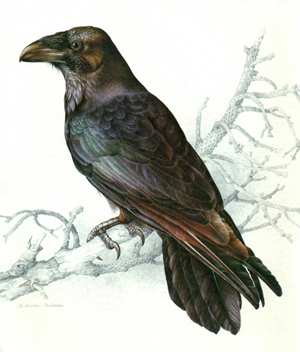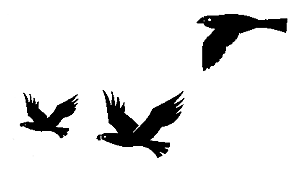Crafty Crow Rivals Primates in Toolmaking
- The ability to make tools was once thought to lie solely within the purview of humans.
- Then in the 1960s Jane Goodall discovered that chimpanzees, too, fashion implements to perform certain tasks.
- Since then, researchers have observed tool use in a variety of animals.
- Nonhuman primates are widely thought to be the most sophisticated toolusers after us.
- Observations of an innovative New Caledonian crow named Betty could alter that view.
- New Caledonian crows are known to make hook tools with natural materials in the wild, but Oxford University zoologists writing in the August 12, 2002, Science report that Betty, a captive crow, spontaneously performed an unexpected variation on this theme, coaxing a piece of straight wire into a hook to retrieve a small bucket of food.
- In a subsequent experiment, the clever crow repeated the feat in nine out of 10 valid trials.
- To bend the wire, Betty anchored one end either in the sticky tape holding the experimental apparatus together or between her feet, and then manipulated the other end with her beak.
- Remarkably, although Betty had previously used supplied wire hooks, she had never seen the process of bending and had no prior training with pliant material.
- "Purposeful modification of objects by animals for use as tools, without extensive prior experience, is almost unknown," the team writes, noting that even our primate kin often fail to show such talent in the absence of explicit coaching.
- "Our finding, in a species so distantly related to humans and lacking symbolic language, raises numerous questions about the kinds of understanding of 'folk physics' and causality available to nonhumans, the conditions for these abilities to evolve, and their associated neural adaptations," the authors conclude. "Birdbrain" might not be an insult after all.
—Kate Wong; Science, August 12, 2002
 More links to animal knowledge.
More links to animal knowledge.


